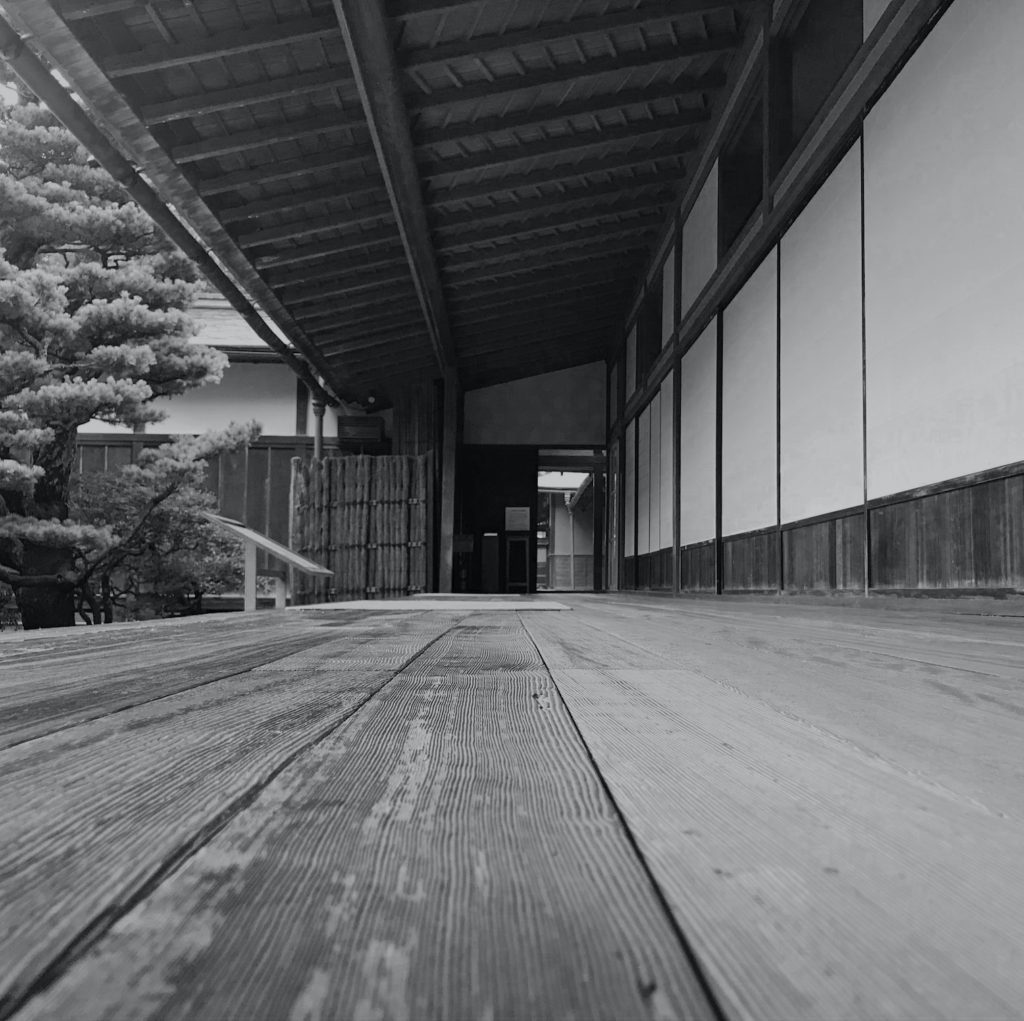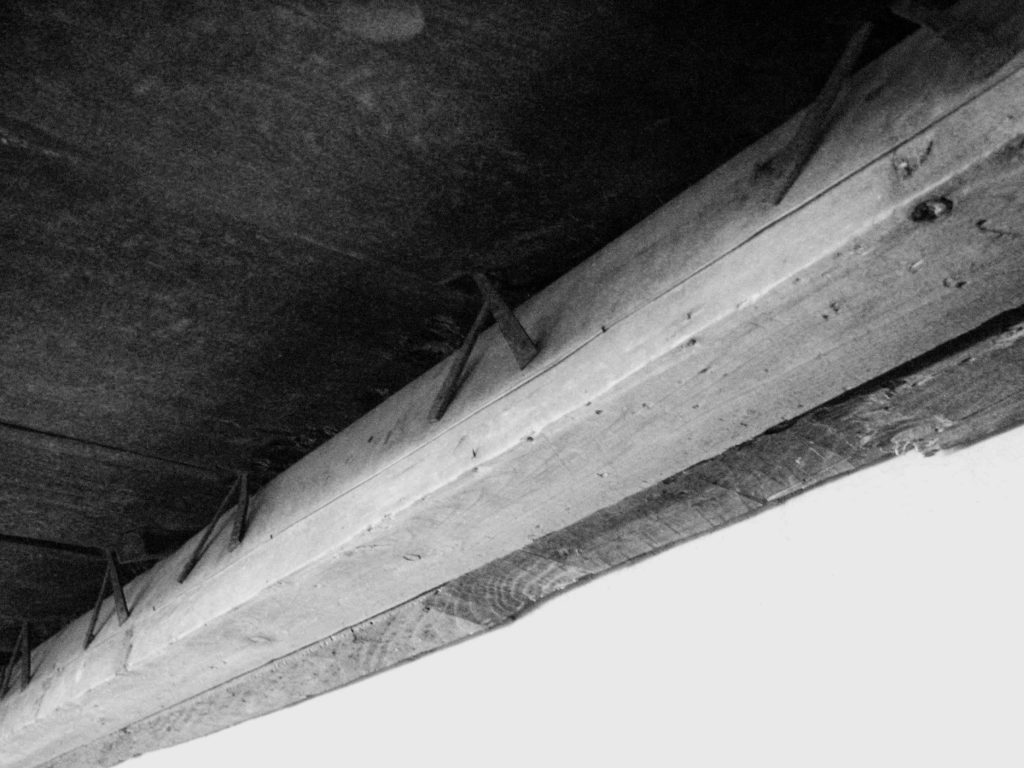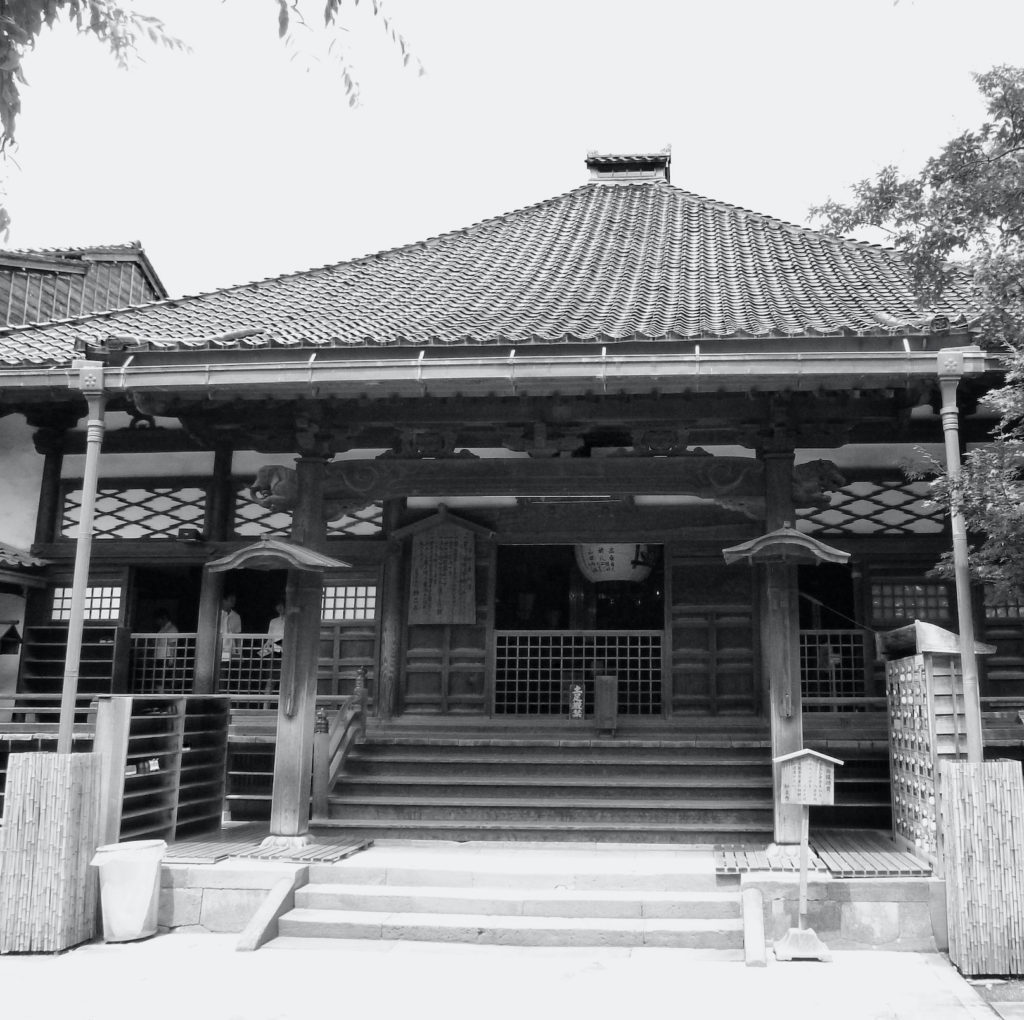Castle Defences
The Japanese have an expression:
能ある鷹は爪を隠す
Nou aru taka wa tsume-o kakusu.
It translates loosely to “The talented hawk hides its claws”, and means that one should hide one’s abilities until the time is right to show them.
400 years ago, talented Japanese architects designed castles and temples with hidden claws. On a recent trip to the country, I visited several traditional castles and temples and was struck by the ingenious use of influence and deception for defensive purposes. While many buildings’ defensive strategies mirror those found in the West, some incorporate unique features that have the potential to inform or inspire novel forms of defence in other domains.
Defensive systems for Japanese buildings would often extend far beyond their physical boundary. Castle defences included the exploitation of natural features, like hills, cliffs, lakes, etc., that limited opportunities for, and the directions of, attack. Spies would be recruited from or would infiltrate enemy camps to gain advanced knowledge concerning intent and planning for attacks, including numbers, and tactics. Located far from the main building complex on the steep hillside surrounding a building, five metres high, 400 metres long smooth stone walls (known as Nobori-ishigaki) topped with populated wooden defensive structures would provide a formidable obstacle. Nobori-ishigaki slowed-down and funnelled attackers, and would often be used in combination with other obstacles such as moats and heavily fortified bridges.
Narrow paths cut deep into the hillside would lead uphill through densely planted spinose bushes (spiny, prickly or sometimes stinging plants) that served to canalise attackers. These sloping paths used unevenly spaced stone steps so that attackers were unable to establish a rhythm in their stride when attempting to run up the path, forcing them to slow-down and consciously navigate the steps. The path would also wind in a spiral from bottom to top around the hill, achieving two effects: First, it extended the length of the path, increasing the distance that attackers had to travel to reach the building at the top. Second, throughout an attacker’s journey, the spiral made them visible and vulnerable to defenders located at the top of the hill, extending defenders’ opportunities and timeframe to counterattack. Due to the path being cut deep into the hillside, it often passed under bridges built across peaks on the higher ground, causing attackers to find themselves surrounded from above in every direction.
On the approach to the main keep, attackers might encounter an undefended doorless gate (Tonashi-mon) located close to a more heavily fortified gate (Tsutsui-mon). The tonashi-mon primarily served as an ‘easy option’, luring attackers into a central courtyard where defenders located on ramparts could attack them from all four sides. If attackers stopped to attack the tsutsui-mon (forcing them to bunch up) defenders would exit the buildings via the courtyard and tonashi-mon to attack the enemy from behind.
The square courtyard layout, known as Renritsushiki-tenshu, featured towers on each corner that afforded vantage points with overlapping sight-lines, eliminating blind spots and making it virtually impossible for defenders to be surprised by the direction of an attack. Some courtyards would also be built across different vertical levels, making navigation and movement hard, and confusing attackers as to the main target of the attack and best route to get there.
The central keep would have decorative gables (Hafu) that concealed hidden gun ports (Kakushi-zama) behind removable plaster sections. On top of the keep, ramparts provided a clear view of the attackers. In common with many Western castles, the entrance to the keep would often feature loopholes (Ishi-otoshi) built into the structure of the building. Conventional wisdom held that these downward openings enabled defenders to drop rocks, boiling oil or water onto any attackers that were attempting to scale the building. However, recent thinking is that the openings served as gun ports. The keep walls sometimes also featured a ‘drum’ design (Taiko-kabe) with an inner core filled with rubble that distributed the impact of cannon fire, leaving the inner wall of the keep unharmed in the face of direct attack.
These features all served to disrupt an attacker’s approach to a building. However, influence and deception were also often employed defensively within a building complex itself.
Nightingale Floors
Several Japanese temples and Samurai residences feature an Uguisubari, or nightingale floor. These are wooden floors that, when walked upon, intentionally make loud chirping or squeaking noises. The noise supposedly resembles the singing of a nightingale and was considered pleasing to the ears of residents. However, at night, the floor acted as an intruder warning system that let residents know when people were approaching the building.

The flooring works through the use of upside-down V-shaped nail joints that rub against a jacket or clamp, causing a chirping noise when pressure is applied from above.

Myōryū-ji

Completed in 1643, Myōryū-ji is also known as Ninja-dera, or the Ninja Temple. Despite its name, Myōryū-ji has no association with ninjas and is located in Kanazawa, Ishikawa (and not the regions where ninjas were established – Iga Province and Kōga). Myōryū-ji served as a Samurai military outpost disguised as a functional temple, and the reference to ninjas most likely relates to the panoply of influence and deception-based defences the building incorporates.
The Tokugawa shogunate prohibited regional lords from constructing buildings that were higher than three stories. However, Myōryū-ji comprises seven stories, two that are visible from the outside, and five hidden ‘floors between floors’. 29 overt and covert staircases connect the floors and turn the internal layout of 23 rooms into a labyrinthine puzzle. In addition to its confusing and disorientating layout, the building also incorporates a host of tricks, traps and other features that create additional defensive advantages.
The temple is built around a central water well that is approximately 25 meters deep. The well purportedly incorporates a tunnel above its water-level that leads to the nearby Kanazawa Castle, that would enable members of the Maeda family to escape in the event of an attack. While such a tunnel is technically feasible, there is no evidence that such a tunnel exists in reality. At the very highest point of the temple, a small lookout affords a view that extends as a far as the castle and across the Kaga plain, enabling residents to detect any approaching armies.
Entering the Temple
Upon entering the temple, on the approach to the central worship hall attackers would encounter a saisen box – an open box with wooden bars on the top used to collect coins thrown in as offerings. The box is built into the floor and leads to an underground pit containing spikes. The first few attackers rushing into the building would fall through the box and be impaled upon the spikes.
Once subsequent attackers had learned to avoid the pit and make their way to the main hall, they unknowingly would already have moved past their primary target or prize – the daimyō, or feudal lord. He would be waiting in an upstairs room situated directly above the entrance to the main worship hall, and attackers would not think to look back along the path they had already travelled. The daimyō would watch the progress of attackers through a one-way screen made from bamboo, that can be peeked through when up close, but that is opaque when viewed from a distance.
To the side of the main hall was a flight of stairs that appeared to provide a clear route to the upper levels of the temple. However, to get to these stairs, attackers would have to pass along a corridor lined with more one-way bamboo screens, enabling defenders hidden in dark wall recesses to monitor attackers’ progress and maximise the timing and impact of their counterattack.
Pitfall Trap
If the attackers avoided the stairs and headed to the left of the altar, they would encounter a hidden drop that was usually covered by floorboards. Enemy attackers would fall through the hole into an underground room, where they would be attacked by waiting guards.
Akari-Tori Stairs
Once attackers had made it past the recesses and avoided the pitfall trap, they would encounter a set of stairs leading to an upper level. The vertical face of the steps incorporated windows covered by semi-translucent shôji paper, enabling a guard hiding below the stairs to see the outline of the feet of any would-be hostiles. The paper screens could be pierced by swords and spears to facilitate an attack on the invaders.
Some of the temple’s staircases would bypass a hidden floor. In some places, if attackers wanted to ascend to a higher level, they would need to first descend to a lower floor to access another staircase that led to the floor two stories above. In some cases, staircases would appear to lead from one story down to another; however, at the bottom of the staircase, removable floorboards could be lifted, and the staircase would secretly continue to a lower level.
Sliding Doors
If attackers took a different route through the ground floor of the temple, they would soon encounter gimmicked sliding doors. From the inside, if the attacker slid the door open, it would lead outside. But if the door was opened in the other direction (counter to its apparent mechanism), it would reveal a hidden staircase to a secret room. When the door to the outside was open by invaders who were letting themselves into the building, the door to the secret staircase would remain blocked and hidden.
In addition, many of Myōryū-ji’s doors locked automatically after being shut, and could only be reopened from one side. These one-way doors allowed defenders to block their adversaries’ advance, or trap them in a confined space. Throughout the temple’s corridors, doors would usually be left open, but in time of attack could be closed and locked automatically to slow-down the advance of intruders.
Constraints and Limitations
The critical path for reaching the daimyō through the building complex involved passing through a room that had its ceiling deliberately lowered. This made it extremely difficult for attackers to use their ōdachi or nodachi – types of Samurai long sword. Defenders would engage the invaders using katana or tachi, that were shorter and more manoeuvrable within the constraints of the room,
Seppuku Room
If the invaders ultimately caught the daimyō, they would execute him and present his head to their ruler as proof that the mission had been successful. If escape was not possible (for example, via the secret well tunnel) then as a last resort, the daimyō would move to the nearby Seppuku room. This room could only be entered via one self-locking door that was impossible to open from the inside. Covering the floor were four rice straw tatami mats (the number four being unlucky in Japanese culture). Rather than submit to the humiliation of capture, the daimyō would commit seppuku (ritual suicide by cutting the belly) while leaving a fire blazing that would rapidly raze the entire temple to the ground. These actions both preserved his dignity and denied the attackers victory.
Japanese buildings employed many influential and deceptive defence strategies that were designed to confuse, mislead, trap, fool, constrain and kill enemy attackers. Next, these strategies shall be considered in terms of their potential application elsewhere.
Transferrable Defensive Strategies
The strategies employed for Japanese building defence employ influence and deception in novel ways to make it more difficult for an attacker to reach and capture the system’s core asset or prize, the daimyō. Viewed generically, these strategies have the potential to be employed in other domains, both physical and virtual, to defend other types of system and the assets they protect.
Analysis of the examples described reveals the following 35 defensive strategies (although many others can also be gleaned):
- Locate the system within natural defences to reduce potential avenues of attack.
- Study the attacker on their home turf to learn about their capabilities, tactics and intent.
- Maintain a vantage point with views to the horizon.
- Overlook the attacker’s path while remaining hidden.
- Lengthen the path along which the attacker has to travel.
- Sink the path through non-traversable ground, to canalise and direct the flow of the attacker.
- Spiral the path to render the attacker perpetually visible and vulnerable from a single defensive location.
- Make the path steps uneven, to break-up the attacker’s rhythm and disrupt routine and automatic processes.
- Employ obstacles to slow-down the attacker’s progress along the path, and create points of bunching and increased vulnerability.
- Smooth the system’s features to reduce potential footholds.
- Focus defensive resources on any bridges that link structural components.
- Create points of attack in front of, behind, to the sides of, above and below the attacker’s path.
- Distribute the adversary’s attacks across a network of loose absorbable capabilities, to lessen the overall impact.
- Lure the attacker into a courtyard that is strongly defended on all sides.
- When the enemy pauses to attack a gate, attack them from behind.
- Create overlapping defensive sightlines and remove any blind spots.
- Hide covert layers of defence between the overt layers that are visible to the attacker.
- Make structural and functional features dual-purpose, so that they imply one function to the attacker while fulfilling a secondary function for the defender.
- Hit the attacker hard as they enter the keep.
- Create a maze with hidden levels, staircases (links) for moving between levels, doors (or gates), one-way mechanisms, dead ends and traps.
- Lure the attacker past the prize, such that they do not think to look back along the path they have already travelled.
- Use contrast to hide in the shadows.
- Wait for the attacker in the system’s access points and recesses.
- Observe the invader through a one-way screen.
- Attack the invader through a one-way screen.
- Insert false dead-ends into passages that lead to the prize.
- Compartmentalise the system using doors.
- Keep the doors open to allow easy passage, but close them when under attack.
- Use sliding doors to open one path while obfuscating others (and when attackers open a door to enter part of the system, have it seal off another path).
- Use one-way doors to trap the attacker in a dead end.
- Lead the attacker out of the system and close the door behind them.
- Have paths that skip levels within the system, so that the attacker has to take a step backwards to be able to progress further forwards along the path.
- Constrain the attacker’s functional freedom of movement, then counterattack using smaller, more agile weapons.
- When the attacker is close to the prize, use a secret tunnel to move the prize out of the system.
- If all else fails, destroy the prize to prevent its capture, and raze the system to the ground.
These strategies form only a tiny subset of potential ways to defend a system, and all require substantial interpretation, deconstruction and specification to have utility in another context. However, they demonstrate how the study of one domain that employs defensive influence and deception can potentially inspire the creation of new defensive measures in another domain. Other domains that employ influence and deception involve an even broader set of strategies that could similarly be transferred and employed elsewhere; for some pointers to a range of other deceptive domains, see here.


